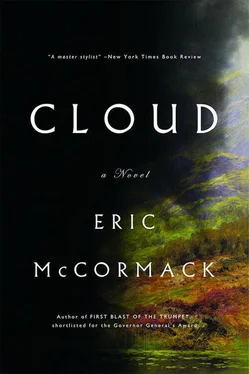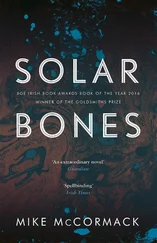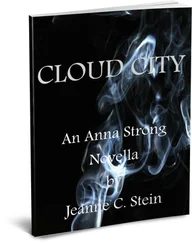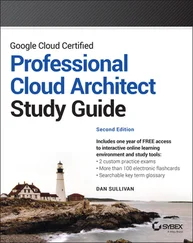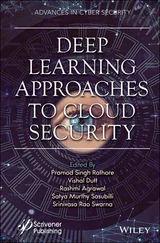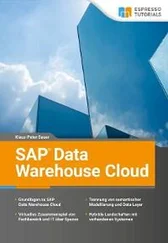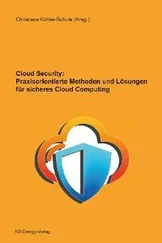After an hour or so, the inhabitants of Duncairn were already getting so used to the phenomenon overhead that they returned to doing what they’d been doing before the cloud arrived. The lawyer went back to writing his writs, the kiln operator to baking his clay pottery, the brewer to stirring his vats of frothy, strongsmelling Upland beer, the various farmers to hoeing their rows of beets and potatoes, and the housewives to preparing the thick, chewy kale soup, as usual, for dinner. The children “resumed their childish games, playing peever and ring-around-the-rosy, with scarcely a glance at the strange sight above them, as though it were an everyday event.”
As it turned out, the phenomenon was about to end. The account concludes in this way: “The kirk belfry chimed the hour of three, the wind began to gust with unwonted violence, black hailstones crashed down on Duncairn, and on the faces of the few brave souls who looked up. Others, from the shelter of their abodes, witnessed the final dissolution of that obsidian mirror in the skies. The black hail turned to black rain that ran like ink down the gutters of Duncairn then turned into plain water. By five minutes after three, the rain had ceased and the Upland sky had returned to its wonted grey aspect.”
A mottled blank page was followed by a section entitled “Appendix.” It was only a few pages long.
AS I SAT THERE in that uncomfortable chair in my hotel room in La Verdad, I felt puzzled by what I’d read. I knew The Obsidian Cloud must surely be fiction. Yet it was all done in that factual way, with not the slightest hint of irony, or parody, or any of the usual signs to indicate it was made up. Since the author was a clergyman — the Rev. K. Macbane — I wondered if it was meant to be some kind of spiritual or religious parable. If so, its meaning wasn’t at all clear to me.
I got up out of my chair for a moment to clear my head and went over to the window to check the aftermath of the rainstorm. The Mexican sky was now a clear, killing blue, not a cloud to be seen. The streets and sidewalks below my window already looked bone-dry. If I hadn’t been out in it an hour ago, I’d never have known there’d even been a storm.
Such a transformation in a subtropical climate wasn’t miraculous. It was a daily, commonplace phenomenon in the rainy season and easy to understand. Certainly, it was quite unlike the book’s “obsidian cloud.”
So I went back to my chair and began reading again. Maybe the Appendix would give me some indication of what was going on.
MACBANE OPENS THE Appendix with a significant confession: he himself did not see the phenomenon. He was “acting only as an historian,” relying exclusively on the eyewitness accounts: “I have faithfully recorded those things that were told to me and leave the reader to pass judgment on their credibility.” In fact this Appendix was needed because of “two new testimonies” about the phenomenon that had only come to his notice some weeks after the main text had gone to the printer. Like any historian, he felt “an obligation to the complete truth” and was passing along this latest information.
The first testimony had come from the provost of the little mining village of Glenmuir, a few miles east of Duncairn. There, the four children of the Mitchell family — two boys and two girls — were staring up at the black cloud. All at once, so their horrified mother told the provost, their eyes burst, making little popping noises that she likened to “soup bubbling on the hob.” A moment after that, each child vomited forth a stream of blood and fell down, quite dead. The provost himself could attest to the emptiness of the eye sockets of the four children where they had been laid out on the floor of the woman’s house.
Gruesome though that first testimony was, the second really caught my attention. It was an extract from the journal of a local poet, Meg Millar, about her various inspirational rambles in the Uplands. She records that on the day of the phenomenon, she was halfway up the Cairn Table, the highest hill in the region, collecting the little yellow saxifrages which grow only on the southwest side. She was thus a thousand feet higher than anyone down in the valley when the cloud stopped overhead, and thus had the closest view. “I at first believed the cloud was reflecting the earth beneath. But then my own eyes revealed something other. What I beheld was not this world but another planet slowly whirling its way past. The inhabitants were staring right at me, their eyes glittering red in such a way as I have never before seen and never wish to see again. Their arms were stretched out as if to seize me if only they could come near enough. I left my precious saxifrages where they were and scrambled like a mountain goat down the Cairn Table into Duncairn.”
Meg Millar’s observations, if true, were certainly astonishing enough. But for me, the very sight of her name stirred up other memories of Duncairn. When I was there, I’d been given one of her books. The gift of it would turn out to be an ill omen, though I was too innocent to understand that at the time.
After these final testimonies, the Appendix concludes with a personal reflection by Macbane himself. His response to everything he’d heard about the strange matter of the obsidian cloud seemed to me so full of common sense, I quote it here in full:
As a rational man, my first inclination is to dismiss the story of the obsidian cloud over Duncairn as yet another instance of mass delusion, such as the many Apparitions of the Virgin, or bleeding trees, which the more superstitious of human beings have allowed to be imposed upon them, or have imposed upon themselves, from the Dark Ages up to this very day.
Yet, as to this black cloud, I cannot help but wonder
at the many reports from persons still living, with no trace of any mischievous collaboration or apparent motive for perpetrating a deception upon the gullible.
I have, in consequence, thought it best in this book merely to compile their attestations, without passing judgment. For it is a truism that we who live now in a changeable and perplexing world are like ancient Archimedes: we lack any stable ground from which to wedge apart the illusory and the real. Perhaps some future scholar looking upon this history of the obsidian cloud may be able, with a more justified confidence than I now possess, to distinguish the one from the other.
A FEW DAYS FOLLOWING the discovery of The Obsidian Cloud , my business was over and I flew back to Ontario with the book in my bag. I was going to find out what I could about it when I got home to Camberloo.
And indeed, once I’d settled back into my routine, I spent a few hours in the local university library leafing through encyclopedias and literary histories, thinking I was bound to come across some reference to such an extraordinary piece of work. But I could find absolutely nothing on The Obsidian Cloud , or on any comparable natural phenomenon, or on the author, Macbane.
I soon realized I didn’t really know what I was doing, and that this kind of research would be much better carried out by an expert.
Someone knowledgeable in these matters was even more logical.
“Don’t ask just any old expert,” he said to me. “Why not a Scottish expert? After all, Scotland was where the incident was supposed to have happened and where the book was published.”
So I ended up phoning the National Cultural Centre in Glasgow and managed to talk to the rare books curator. After listening to my request for help (I hinted I’d be sending a substantial cheque to support the centre’s efforts), he asked me a few brief questions about myself and about how I came into possession of the book. He then asked me to mail it to him so that he could examine it and see whether it merited any kind of serious research. He’d be in touch with me when and if he found anything of note to report.
Читать дальше
